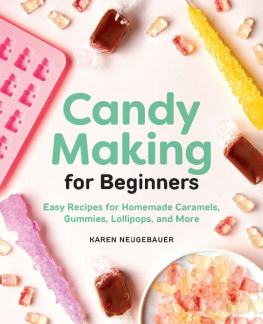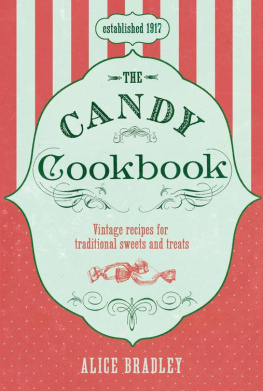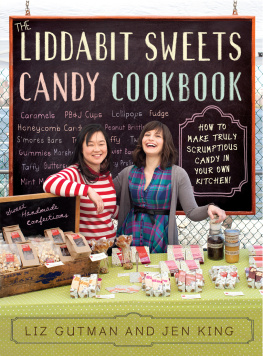

Copyright 2020 by Rockridge Press, Emeryville, California
No part of this publication may be reproduced, stored in a retrieval system, or transmitted in any form or by any means, electronic, mechanical, photocopying, recording, scanning, or otherwise, except as permitted under Sections 107 or 108 of the 1976 United States Copyright Act, without the prior written permission of the Publisher. Requests to the Publisher for permission should be addressed to the Permissions Department, Rockridge Press, 6005 Shellmound Street, Suite 175, Emeryville, CA 94608.
Limit of Liability/Disclaimer of Warranty: The Publisher and the author make no representations or warranties with respect to the accuracy or completeness of the contents of this work and specifically disclaim all warranties, including without limitation warranties of fitness for a particular purpose. No warranty may be created or extended by sales or promotional materials. The advice and strategies contained herein may not be suitable for every situation. This work is sold with the understanding that the Publisher is not engaged in rendering medical, legal, or other professional advice or services. If professional assistance is required, the services of a competent professional person should be sought. Neither the Publisher nor the author shall be liable for damages arising herefrom. The fact that an individual, organization, or website is referred to in this work as a citation and/or potential source of further information does not mean that the author or the Publisher endorses the information the individual, organization, or website may provide or recommendations they/it may make. Further, readers should be aware that websites listed in this work may have changed or disappeared between when this work was written and when it is read.
For general information on our other products and services or to obtain technical support, please contact our Customer Care Department within the United States at (866) 744-2665, or outside the United States at (510) 253-0500.
Rockridge Press publishes its books in a variety of electronic and print formats. Some content that appears in print may not be available in electronic books, and vice versa.
TRADEMARKS: Rockridge Press and the Rockridge Press logo are trademarks or registered trademarks of Callisto Media Inc. and/or its affiliates, in the United States and other countries, and may not be used without written permission. All other trademarks are the property of their respective owners. Rockridge Press is not associated with any product or vendor mentioned in this book.
Interior & Designer: Joshua Moore
Art Producer: Sara Feinstein
Editor: Myryah Irby
Production Editor: Rachel Taenzler
Photography 2019 Marija Vidal.
Food Styling Katherine Knowlton.
ISBN: Print 978-1-64611-040-7
eBook 978-1-64611-041-4
R0
To the kid inside us all. May they be let out to play more often!

Contents
C ANDY IS ONE OF LIFES GREAT EQUALIZERS. Its there for us in good times and bad. Its the lollipop after a doctors visit or the bowl of candy waiting for you at the bank tellers counter. Youll find a chocolate mint on the pillow of a freshly made hotel bed and another on top of the bill when visiting your favorite restaurant. The Tooth Fairy might leave a few candy coins in exchange for a lost baby tooth, just as a doctor might give you a sucker after a visit. Candy communicates something truly elemental. It reminds us that life can be sweet, even as were enduring its unavoidable annoyances.
Candy marks moments, big and small. Throwing a kids birthday party? Youre going to need some wrapped goodies for the piata. Meeting a friends new baby? Thats a good excuse to shop for bonbons. Someone graduates. A promotion at work. Going to the movies. Even checking out at the grocery store. Candy is there.
Candy has always been a part of life. Sweet treats have been lifting our spirits since ancient times, when the Greeks and Egyptians valued honey as medicine and referred to it as the ambrosia of the gods. Native Americans developed maple syrup and candy, and many of their traditions came to revolve around maple sugaring season.
Candy brings holidays to life. In fact, its hard to imagine any holiday without candy. Halloween would not be the same without trick-or-treating. No one would search for plastic eggs without the promise of jellybeans and chocolate robin's eggs inside. And kids would sleep in all December long were it not for Advent calendars, peppermint bark, and stocking stuffers. All the rituals, moments, and shared experiences are just better with candy. In many homes, cooking candy is as synonymous with the holidays as the smell of freshly fallen leaves, fires in the hearth, mulled cider, and the scent of evergreen trees inside the home. The aroma of family recipes wafting through the house is like a sensory time machine back to childhood. For younger generations, those sweet scents mean its a special time. Its time to make the candy!
Many people think making candy at home, in your own kitchen, is complicated, difficult, and expensive. Its not. Getting started requires only basic ingredients, a few pieces of common equipment, and some heat. Thats it. With just a little effort, youll be able to take your holidays to a whole new level. Birthdays, anniversaries, and thank-you gifts will be that much more memorable when you add the personal touch of homemade candy crafted with love. Plus, there is a great deal of joy that comes from creating something delicious with your own hands. Your creations become an expression of you.
Your candy can be soft or hard, chewy or sticky, smooth or chalky, fluffy or dense, or simply dissolve the moment it hits your tongue. It can be sweet or savory or both and include everything from nuts and seeds to fruits, liquors, creams, and spices. You can make soft candy, like caramels and Pte de Fruit, hard candy, like toffee and lollipops, or chewy candy, like taffy and gumdrops. Imagine the exciting combinations just waiting to be discovered!
Candy making is a great way to spend quality time getting creative (and sticky) with family and friends. Its a lot of fun, its delicious, and most importantly, it just makes life that much sweeter.

THESE DAYS MOST CANDY COMES FROM GIANT factories using secret recipes and questionable ingredients. But it wasnt always so. Candy, like any food, has a long tradition of being lovingly created by someone in the home, with recipes passed down from one generation to the next. These treasured recipes called for special tools, specific techniques, and even secret ingredients. While some of this still holds true, the mystery behind candy making has been dispelled so that with a few key pieces of knowledge, you, too, can make wonderfully tasty candies in your kitchen like a pro.
In the chapters that follow, well break down the various categories, like barks and fudge, lollipops and hard candy, and more. Here, well focus on the basics you need to get started with your candy experiments.
You probably have most of the items you need to launch your candy kitchen, such as pots, pans, bowls, and spoons. A few tools, however, require careful thought and a solid working knowledge of how they function when preparing candy.
Next page













